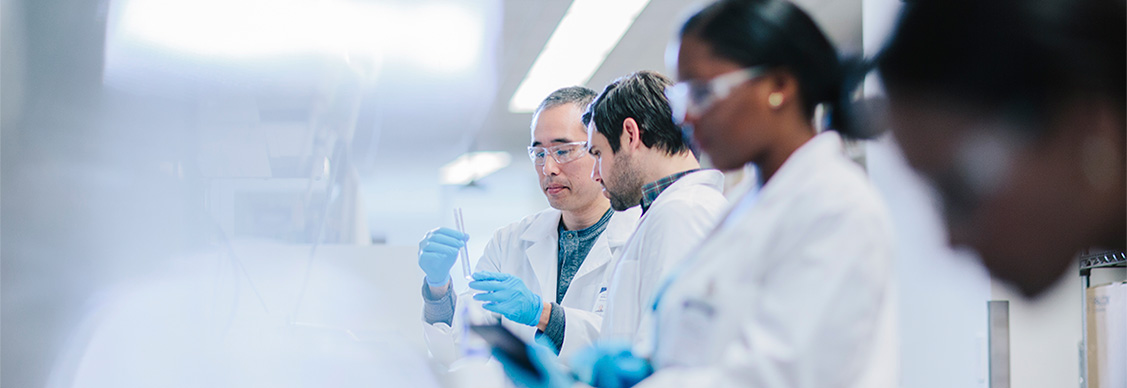How developers are keeping up with life sciences demand
From racetracks to R&D: Creative reuse of space is powering a new era for the growing sector
Breakneck expansion and new spending in the life sciences sector have pushed developers to adopt innovative solutions to keep up with rising demand.
Take the 100/150 Salt Street project in Boston, where developer HYM Investment Group is betting on the transformation of the old Suffolk Downs racetrack into a 161-acre, mixed-use project complete with life-science buildings.
Key to this project was putting research operations and manufacturing together in one building. This will address growing pains in the industry. For instance, it will allow startups to grow in place.
“Tenants need space yesterday. But they don’t want their money to go into space they are going to outgrow. They want that money to go into research,” says Chris Maciejczak, JLL’s Life Sciences Project and Development Services Managing Director.
This type of repurposing space has become increasingly critical for life sciences companies short on real estate for their expanding operations. Technology continues to evolve rapidly, and new companies are bringing products to market at a much faster rate than before, meaning vast changes to their real estate needs, Maciejczak says.
For one, that means companies need manufacturing space far quicker than they ever have before.
Looking for more insights? Never miss an update.
The latest news, insights and opportunities from global commercial real estate markets straight to your inbox.
New product type
“This is making room for an entirely new product type,” Maciejczak says about HYM’s 100/150 Salt Street project. When completed, it will house both R&D lab and cGMP (manufacturing) facilities in one building—something that has not been done before at this scale.
The concept, Maciejczak says, will address a major pain point for new companies having to bifurcate operations—manufacturing in one building and research in another—within the first year of operation, which dramatically impacts company culture.
“Landlords also want something that will differentiate them from the other product in the city, and it will be interesting to see how this changes the way people think about buildings,” Maciejczak adds.
Using space in new ways is not unique to Boston. For example, in Philadelphia, where life sciences demand is already causing the market to shift outside of University City, conversions of underutilized office and industrial sites are rising.
Investment Opportunities
Adaptive reuse
On the manufacturing side of the equation, Hilco Redevelopment Partners purchased a 1,300-acre industrial site in Southwest Philadelphia and is converting it into a hub for logistics, e-commerce and life sciences space that will handle both R&D and manufacturing requirements.
Pioneering biotech company Spark Therapeutics, a member of Roche Group, is investing more than $500 million in building a gene therapy innovation center complete with a manufacturing facility in the heart of Philadelphia’s University City neighborhood. Collocating these facilities, especially in an urban environment, is very rare, says Tyler Vandegrift, JLL Senior Managing Director.
Vandegrift says one of the biggest questions circulating today is how technology will change the lab and manufacturing space in the future and make parallels between life sciences and how hybrid is changing the traditional office landscape.
“Companies are thinking about flexibility for the future and need to plan for ways to expand if they experience positive clinical trials and a growing business,” Vandegrift says. “Do these tenants build out specific labs for their use and highly engineer it, or do they keep them flexible to pivot and modify as their needs arise in the future?”
Strategic partnerships
Chad Urie, an Executive Managing Director at JLL focusing on technology and biotechnology real estate, says there’s been a shift in how Los Angeles developers are working with companies.
“Lately, we’ve seen more of a partnership mentality between tenants and landlords. Other than just the physical building or space, life science developers are thinking about what else they can bring to the table,” Urie says. “The winners in the developer space will be those who build out a complete ecosystem for these tenants to leverage their business plan successfully.”
Besides the physical building or space, tenants want to know that landlords can grow their life cycle from 2,000 square feet to 200,000 square feet both in their current city and across the nation or internationally.
But it’s not just scale, Urie says. Developers are also bringing in their own venture capital funds and innovative solutions to help these companies grow.
For example, Breakthrough Properties offers a board to startups to help with leadership and scale. Other developers are focusing on experiences like panel speakers and events to create these ecosystem hubs like the Bay Area tech scene.
“In the past, we saw a lot of capital raised for life science development that was traditional in setup. ‘We’re the landlord; you pay us rent,’” Urie says. “That is changing. And that is going to continue to evolve.”
Contact our life sciences experts
Talk to us about your life sciences real estate needsWhat’s your investment ambition?
Uncover opportunities and capital sources all over the world and discover how we can help you achieve your investment goals.




